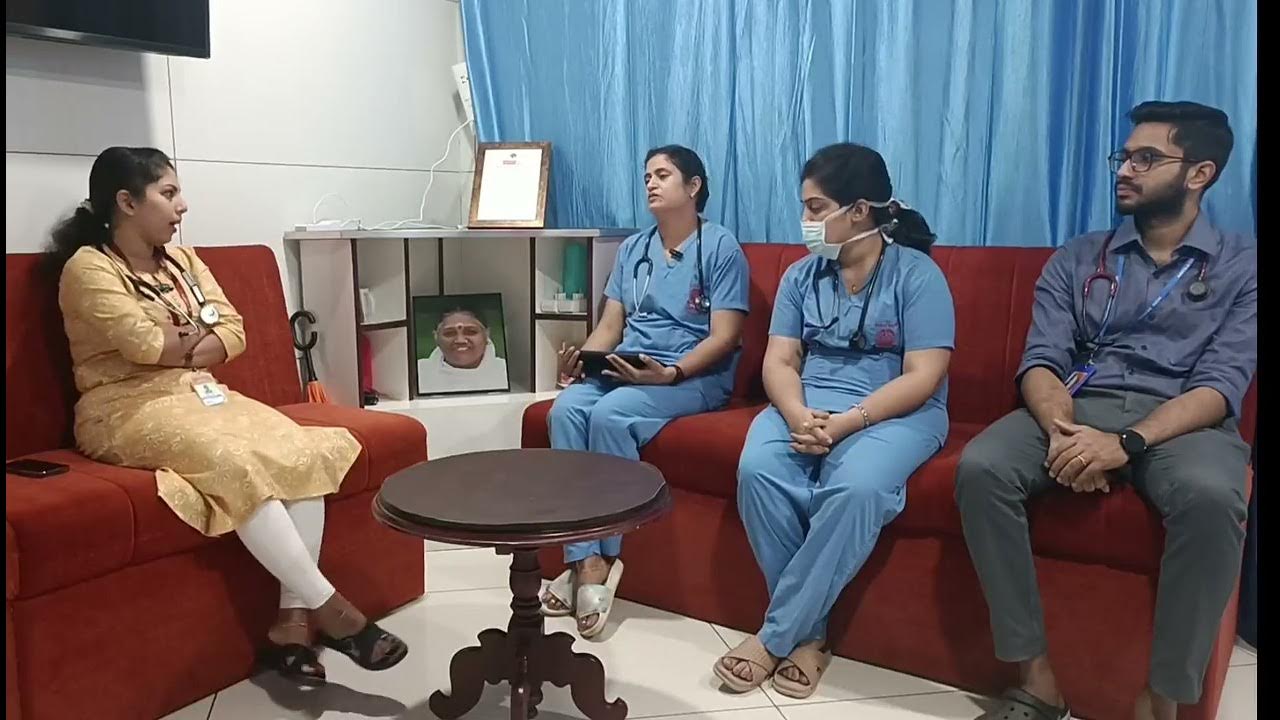Case Discussion || Pneumonia
Summary
TLDRThis medical transcript details a 63-year-old male's emergency room visit for fever, chills, and breathlessness, indicative of pneumonia. The patient, with a history of COPD and prostate hypertrophy, presents with low oxygen saturation and a thick-walled lung cavity. The discussion covers diagnostic steps, potential malignancy concerns due to low hemoglobin, and treatment strategies, including antibiotics for pseudomonas infection and the importance of physiotherapy and postural drainage.
Takeaways
- 🌡️ The patient presented with high fever, chills, and breathlessness, indicative of a severe infection.
- 🏥 Initial assessment revealed the patient was conscious, with no issues in airway or breathing, but had a respiratory rate of 30 breaths per minute and low oxygen saturation at 92%.
- 🩺 The patient's low blood pressure and heart rate could suggest sepsis, a serious complication of infection.
- 🌡️ The patient's temperature was noted, which is crucial in managing sepsis as hypothermia can be a poor prognostic sign.
- 🧬 The patient had a history of COPD and benign prostate hypertrophy, which complicates the clinical picture.
- 🫁 Auscultation revealed bilateral equal air entries with basal crepitations, suggesting pneumonia.
- 🩸 Hemoglobin levels were lower than expected for a COPD patient, potentially indicating malignancy.
- 🦠 Sputum culture grew Pseudomonas, a gram-negative bacteria often found in patients with compromised lung function.
- 💊 Treatment included oxygen therapy, nebulization, and antibiotics targeting pseudomonas.
- 🔍 Follow-up will involve monitoring inflammatory markers, hemoglobin levels, and imaging to assess resolution of the lung cavity.
Q & A
What are the initial symptoms presented by the 63-year-old male patient?
-The patient presented with high-grade fever, chills, dry cough, productive cough with mucopurulent sputum, and breathlessness for one week.
What are the common conditions that can produce chills according to the script?
-Common conditions that can produce chills include urinary tract infection, malaria, and pneumonia.
What was the patient's respiratory rate and oxygen saturation upon initial assessment?
-The patient's respiratory rate was 30 breaths per minute, and his oxygen saturation was 92% in room air.
What are the common causes of tachypnea in the emergency room as mentioned in the script?
-Common causes of tachypnea include hypoxia, metabolic acidosis, and hyperventilation syndromes.
What is the significance of the patient's blood pressure being 90/70 mmHg?
-A blood pressure of 90/70 mmHg is considered low for a 63-year-old male, which could indicate a long-term condition or be due to the current infection.
What could be the reasons for the patient's heart rate not increasing despite low blood pressure?
-Reasons could include the patient being on beta blockers, myocarditis, hypothyroidism, or inaccuracies in examination or documentation.
Why is maintaining body temperature important in a septic patient?
-Hypothermia is a dangerous prognostic factor in sepsis. Maintaining body temperature is crucial as hypothermia can increase mortality.
What does the ABG result indicate about the patient's respiratory status?
-The ABG results show a reduced pH (7.51), pCO2 (29.4), and pO2 (62.2), indicating hypoxemia with hypocarbia, which could be a sign of respiratory distress.
What is the significance of the patient having a history of COPD?
-A patient with COPD is more susceptible to pneumonia, and the type of pneumonia they develop might be different from someone without COPD, often involving gram-negative organisms.
What does the sputum culture report indicate about the patient's infection?
-The sputum culture report indicates the presence of Pseudomonas, which is typically found in damaged lungs and suggests a more severe infection.
What treatment approaches are suggested for the patient with a lung cavity?
-Treatment includes oxygen therapy, nebulization with hypertonic saline or ambroxyl, and physiotherapy including percussion, vibration, and postural drainage.
What are the follow-up considerations for this patient after discharge?
-Follow-up should include monitoring inflammatory markers, checking for a normal or increasing hemoglobin level, and possibly performing an FNAC for the left supraclavicular node, as well as ultrasound examinations of the abdomen and testes.
Outlines

此内容仅限付费用户访问。 请升级后访问。
立即升级Mindmap

此内容仅限付费用户访问。 请升级后访问。
立即升级Keywords

此内容仅限付费用户访问。 请升级后访问。
立即升级Highlights

此内容仅限付费用户访问。 请升级后访问。
立即升级Transcripts

此内容仅限付费用户访问。 请升级后访问。
立即升级浏览更多相关视频

Case Discussion || Malaria

Case Discussion... Priapism # AETCM # Emergency Medicine

Case Discussion.. Dengue Fever

Chest Pain - OSCE history taking for Medical Students | Drs Manual

Hospital-Acquired Pneumonia (Medical Definition) | Quick Explainer Video

Upper Limb Neurological Examination | OSCE Guide | NEW | UKMLA | CPSA
5.0 / 5 (0 votes)
